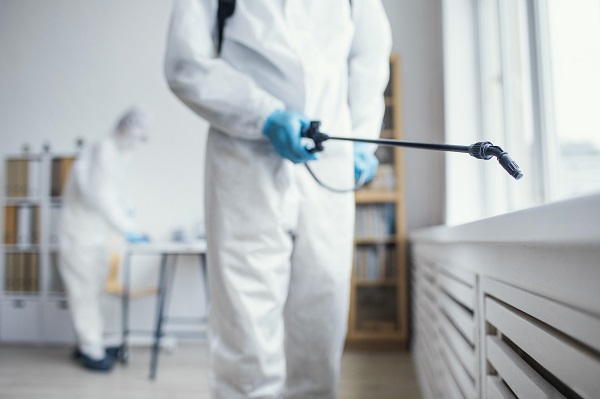The Health Risks You Didn’t Know Pests Bring Indoors

Many common indoor pests carry health risks. Rodents can contaminate food and surfaces with pathogens such as Salmonella and Leptospira. Cockroach allergens are linked to asthma and allergic rhinitis, particularly in children and in densely populated housing. Stinging insects may cause localized reactions and, in sensitized individuals, anaphylaxis. Bed bugs do not transmit diseases, but can lead to sleep disturbance, anxiety, and secondary skin infections from scratching. Fleas and ticks can enter homes on pets or clothing; fleas may transmit Bartonella and tapeworms, while ticks can carry pathogens such as Borrelia (Lyme disease), depending on the region.
These risks often escalate gradually because infestations can remain hidden in wall voids, crawl spaces, and cluttered areas. Effective risk reduction typically involves integrated measures: sealing entry points; maintaining low indoor humidity to deter mites and some insects; storing food in sealed containers; promptly repairing leaks; using HEPA filtration and regular vacuuming to reduce allergen loads; and monitoring with traps and inspections to detect activity early. Identifying likely sources—pet bedding, basements, attics, kitchen storage, and utility penetrations—helps target interventions and limit exposure.
Understanding Hidden Indoor Vectors
Many indoor pests remain unseen but can affect health and hygiene. Rodents can contaminate food and surfaces with droppings and urine that may carry pathogens such as hantaviruses and Salmonella.
Cockroach fragments and droppings are established asthma triggers and can harbor diverse bacteria. Some stinging insects nesting indoors can cause allergic reactions, including anaphylaxis in sensitized individuals.
Certain pests also facilitate secondary problems: cockroaches and rodents can introduce or support fleas and ticks. Bed bugs aren't known to transmit infectious diseases, but their bites can cause localized skin reactions and sleep disturbance.
Dust mites produce allergens that contribute to rhinitis and asthma symptoms. Delayed identification or control can allow populations to grow, increasing exposure to allergens and pathogens and complicating remediation.
Early detection, sanitation, exclusion, and targeted control measures can reduce these risks.
Key Benefits: HEPA Filtration
HEPA filtration is an effective method to reduce indoor airborne allergens. True HEPA filters capture 99.97% of particles measuring 0.3 microns, including common allergens such as dust mite feces, cockroach fragments, mold spores, and pet dander.
Lowering particulate levels can lessen asthma and allergy symptoms and improve overall indoor air quality, particularly for sensitive individuals.
HEPA use can also complement pest management by removing airborne biological debris shed by pests, reducing exposure even after infestations are controlled.
Performance depends on proper sizing, seal integrity, and timely filter replacement. Clogged or improperly installed filters can reduce airflow, diminish capture efficiency, and potentially lead to particle bypass or re-entrainment.
Regular maintenance in accordance with manufacturer guidance is necessary to retain these benefits.
Dehumidifier Placement Tips
Maintaining appropriate indoor humidity can reduce conditions that support mold growth and pest activity.
Place dehumidifiers in areas prone to dampness, such as basements, bathrooms, laundry rooms, and near known plumbing leaks. Allow several inches of clearance around the unit to promote adequate air circulation and efficient moisture removal.
Select models with built-in hygrometers or use a separate hygrometer to monitor and maintain relative humidity between 30% and 50%. Empty and clean the water reservoir regularly to prevent microbial growth.
Ensure air intakes and exhaust vents are unobstructed to avoid airflow restriction and localized condensation. Consistent use and maintenance help support cleaner indoor conditions and make spaces less suitable for moisture-dependent pests, including cockroaches.
Companies Like Hawx Pest Control Offer Comprehensive Solutions
Professional providers such as Hawx Pest Control deliver integrated solutions that help protect homes and families year-round.
Their services typically include detailed inspections to uncover hidden infestations, customized treatment plans designed for specific pests, and preventative measures such as sealing entry points and reducing conditions that attract pests indoors.
Hawx also offers ongoing monitoring and follow-up visits to ensure problems are resolved before they escalate. By combining targeted treatments with preventive strategies and environmentally conscious options, companies like Hawx Pest Control help households reduce health risks, protect property, and maintain a cleaner, safer indoor environment.
Effectiveness: 90-Day Results
Within the first 90 days, well-implemented pest management typically reduces indoor pest activity and associated health risks.
Targeted treatments combined with routine sanitation can lower allergen levels from cockroaches and rodents and decrease the likelihood of food contamination.
Scheduled follow-up visits during this period help prevent reinfestation by addressing surviving pests and interrupting breeding cycles.
Many households report fewer allergy and asthma symptoms and improved perceived air quality after treatment.
Studies indicate that homes receiving integrated pest management and consistent monitoring experience reductions in pest-related health issues, including respiratory symptoms.
|

